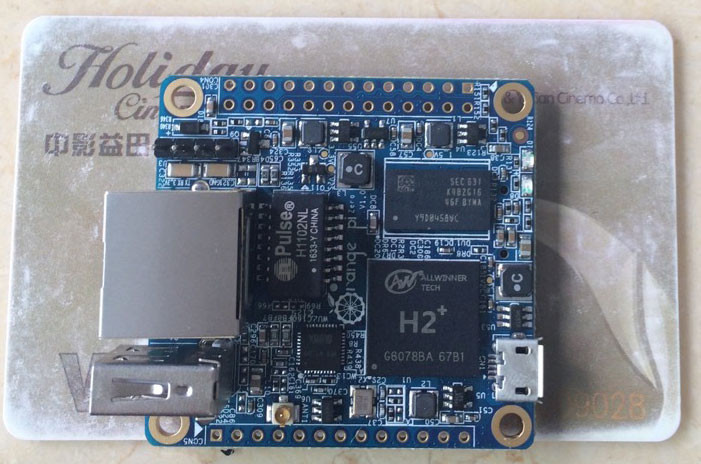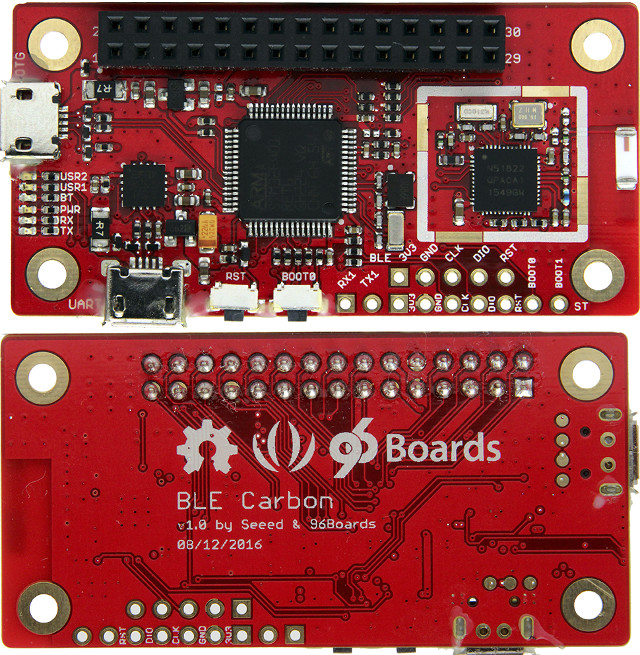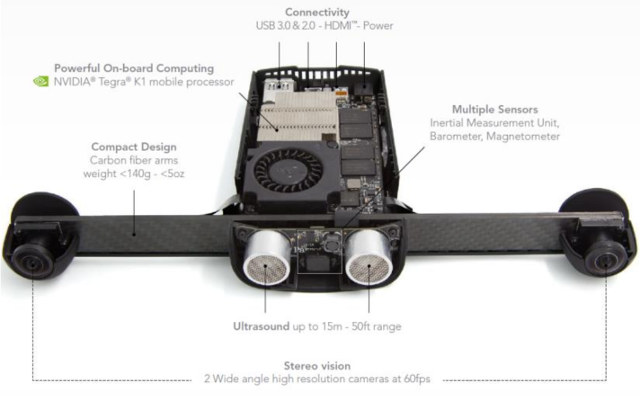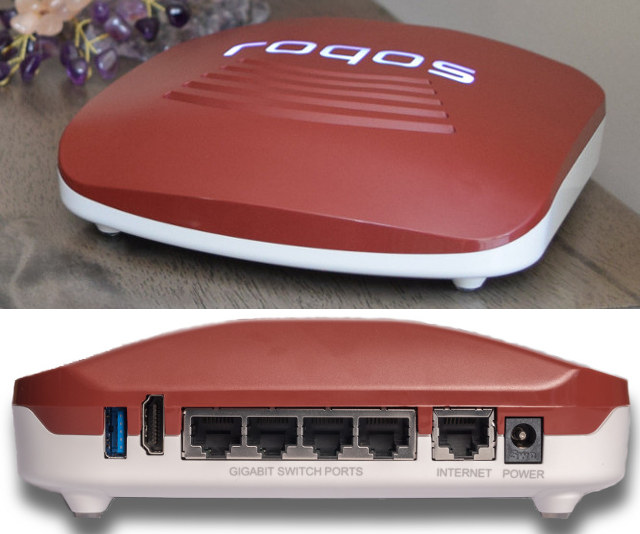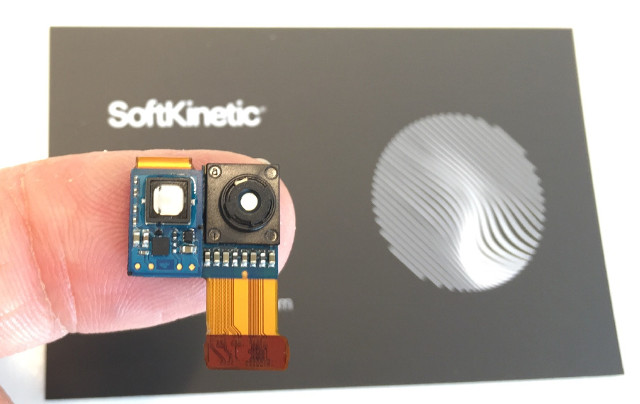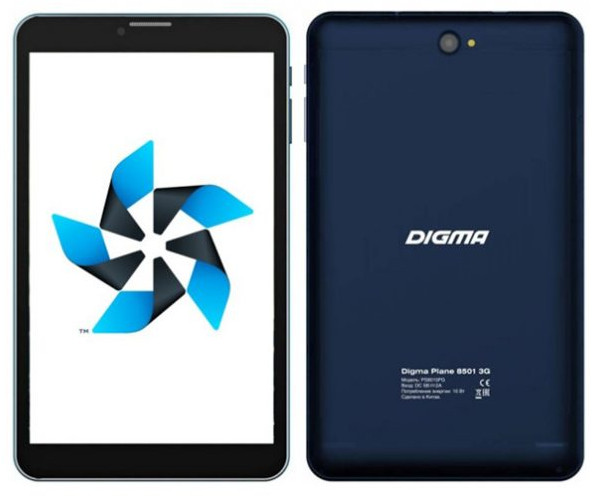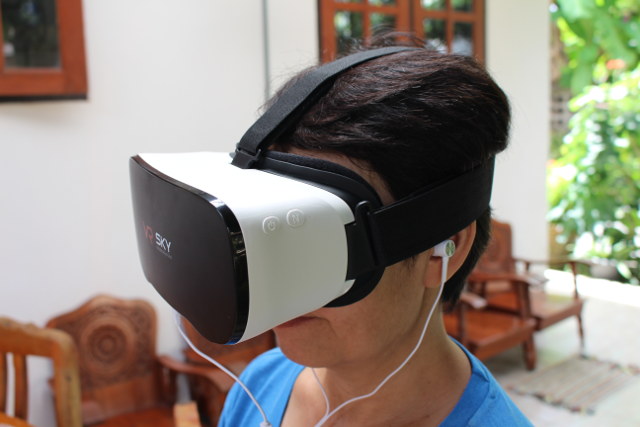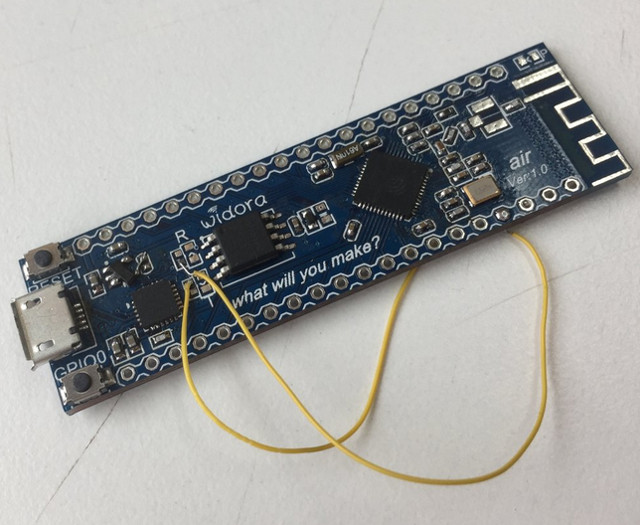Shenzhen Xunlong Orange Pi boards are relatively popular thanks to their low price, and support on communities such as Armbian, but two new upcoming Orange Pi boards might make the company even more relevant in the development board space. First, the company is nearing completion of the tiny, and hopefully ultra cheap, Orange Pi Zero board with Allwinner H2+ processor, and Linaro has announced that an Orange Pi i96 boards compliant with 96Board IoT specifications is also coming soon. Orange Pi Zero The board has not been released, but some pictures have been uploaded to Armbian forums. Orange Pi Zero looks quite similar to NanoPi NEO board but with different processor, a slightly larger form factor, and both Ethernet and wireless connectivity. We don;t have other information for now, but it still possible to get most of Orange Pi Zero specifications from the photos: SoC – Allwinner H2(+) quad core […]
BLE Carbon 96Boards IoT Edition Board Runs Zephyr OS
Linaro Connect Las Vegas 2016 is taking place right now, and the organization has some very interesting development, with a new focus on the Internet of Things thanks to the creation of LITE (Linaro IoT and Embedded) segment group that will work on “delivering end to end open source reference software for more secure connected products, ranging from sensors and connected controllers to smart devices and gateways, for the industrial and consumer markets”. The first LITE IoT Reference Platform release to be made in December 2016, but in the meantime, Linaro introduced 96Board IoT specifications, as well as the first compliant board with the launch of Carbon board (aka BLE Carbon) running Zephyr OS. Carbon 96Boards IoT Edition board specifications: MCU – STMicro STM32F401 ARM Cortex M4 microcontroller @ up to 84 MHz with 512kB Flash, 96kB ram Connectivity – Bluetooth 4.0 LE via Nordic Semi nRF51822 SoC + chip […]
Parrot S.L.A.M Dunk is a Ubuntu & ROS Computer with 3D Depth Cameras for Drones & Robots
Parrot and Canonical have partnered to develop the Parrot S.L.A.M.dunk development kit for the design of applications for autonomous navigation, obstacle avoidance, indoor navigation and 3D mapping for drones and robots, and running both Ubuntu 14.04 and ROS operating systems. The name of the kit is derived from its “Simultaneous Localization and Mapping algorithm” (S.L.A.M) allowing for location without GPS signal. Parrot S.L.A.M Dunk preliminary specifications: SoC – NVIDIA Tegra K1 processor Camera – Fish-eye stereo camera with a 1500×1500 resolution at 60fps Sensors – Inertial-measurement unit (IMU), ultrasound sensor up to 15 meters range, magnetometer, barometer Video Output – micro HDMI USB – 1x micro USB 2.0 port, 1x USB 3.0/2.0 port Weight – 140 grams Parrot S.L.A.M dunk can be fitted various drones and robotic platforms such as quadcopters and fixed-wings, rolling robots and articulated arms using mounting kits. The computer module is then connected to the host […]
Roqos Core AC Router Runs Debian on Intel Atom Bay Trail-I Processor for $19… Plus Monthly Subscriptions
Roqos Core router is interesting on several front. First it’s quite powerful and features-rich with an Intel Atom E3845 processor, five Gigabit Ethernet ports, 802.11ac WiFi, a USB 3.0 port, and even an HDMI port allowing you to use it as a Media Center too. It should also be quite customizable, software wise, since it runs Debian, and finally the business model is also different, as you only need to pay $19 for the router, with the catch that you need to subscribe Roqos Service with “advanced cybersecurity and parental control features” for $17 per month for at least 12 months, bringing the total to $223. After one year, you can opt out of the cloud service, and continue to use the router without the extra security features. Roqos Core RC10 router hardware specifications: SoC – Intel Atom Bay Trail-T E3845 quad core processor @ up to 1.91 GHz (10W […]
SoftKinetic Announces DepthSense 544 ToF Camera for Mobile Devices
SoftKinetic has recently unveiled DepthSense 544 3D depth sensing ToF camera for mobile devices, which they claim is the world’s smallest ToF camera, with the “highest level of efficiency available on the market, perfect for small form factors such as smartphones and wearables”. That’s all nice, but what does ToF mean? ToF stands for Time of Flight, and ToF cameras calculate the distance by measuring the time the light signal travels between the camera and the object as explained by Wikipedia: A time-of-flight camera (ToF camera) is a range imaging camera system that resolves distance based on the known speed of light, measuring the time-of-flight of a light signal between the camera and the subject for each point of the image. The time-of-flight camera is a class of scannerless LIDAR, in which the entire scene is captured with each laser or light pulse, as opposed to point-by-point with a laser […]
DIGMA Plane 8501 3G is the First Tizen 3.0 Tablet
Back in 2013, we saw a Tizen 2.0 tablet prototype by Systena, but for whatever reason, it never came to market. Over three years later, a Russian company called DIGMA is about to launch the first Tizen tablet that you should be able to buy (provided you are based in Russia) with DIGMA Plane 8501 3G tablet running Tizen 3.0. DIGMA Plane 8501 3G specifications: SoC – Spreadtrum SC7731(G) quad core Cortex A7 processor @ 1.2 GHz with Mali 400MP2 GPU System Memory – 1GB RAM Storage – 8GB flash + micro SD slot up to 32 GB Display – 8″ IPS touchscreen display with 1280×800 resolution Cellular Connectivity – 3G connectivity with dual SIM card support Connectivity – WiFi 802.11 b/g/n, Bluetooth 4.0, GPS/A-GPS Camera – 2MP rear camera with LED flash, 0.3MP front camera USB – micro USB port Battery – 3,800 mAh battery good for about 8 […]
VR SKY CX-V3 Android VR Headset Review – Part 2: GUI, 360° and VR Videos, and Issues
VR SKY CX-V3 is an Android virtual reality headset powered by Allwinner H8vr processor and featuring a 1080p display. I had read VR requires 2K or 4K displays to be useful, but since that’s my very first VR headset, if we don’t count the a Google Cardboard clone as one, I did not mind testing one with a 1920×1080 display, and it ended up being an interesting learning experience. I’ve already shown the hardware with the various buttons, touch interfaces and lenses in the headset, as well as accessories like the charger and headphone in the first part of the review, so today, I’ll go through the interfaces, what works, and mention the issues I had with the device. If you’ve never used a virtual reality headset before, you’ll definitely want to read the user manual, which for once is written in proper English, both for entertainment value, and learn […]
Some ESP32 Development Boards to Look Out For: NodeMCU, Widora-air, Nano32, Noduino Quantum, and Wemos
Espressif ESP32 WiFi + BLE SoC launched at the very beginning of the month, shortly followed by ESP3212 module, and while Adafruit sold a few breadboard-friendly ESP32 development boards to developers for $15 a few days ago, stock was limited, and it’s not possible to easily purchase ESP32 boards today, and that’s OK because firmware and software support is still in progress. Several companies are working on such ESP32 boards however, and they tend to show the development progress on social networks, so I thought it would be fun to look at what’s coming… Amica (NodeMCU) ESP32 Board The current NodeMCU board is one of the most popular ESP8266 development platform, and that’s not surprising they are working on an ESP32 version. I don’t have pictures nor full specs of the board yet, but the company showcased their early work on ESP32 last June. Widora-air I only discovered Widora recently […]


